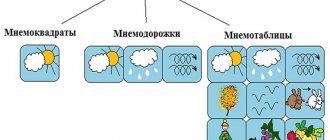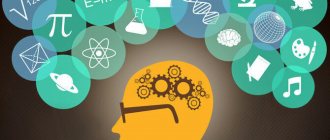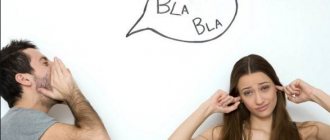If you understand how a person perceives information received from other people, you can find a lot of nuances and features in this issue. What is effective when communicating with some people may be completely ineffective when communicating with others. Some people understand us perfectly, but we can try to “reach out” to others for a very, very long time, and often our attempts will remain unsuccessful.
While some wonder why their interaction with others does not bring the desired result, others apply knowledge about the representation of information in their daily lives, i.e. about those features that differ in presentation and perception by different people. In our previous two lessons, we introduced you to the basic techniques of neuro-linguistic programming. But they concerned precisely the linguistic aspect of this area of practical psychology. And very little has been said about the impact of neuroprocesses on the human psyche and perception. The presented lesson is dedicated to this topic.
From this lesson you will learn about what representational systems are and what role they play in NLP, as well as what methods of transferring experience and types of perception systems exist (visual, auditory, kinesthetic and others). The article will also present methods for determining the leading modality (the main representative system) in a person, including various diagnostic methods, such as tests, special questions, observations, etc.
Auditory sensory representational system.
The auditory representational system is based on the perception of sounds. People with the presented system (auditory learners) perceive information through the process of listening. All information is perceived and remembered by them, mainly in the form of sound impressions.
SIGNS.
You can recognize an auditory person by their eyes that often move in different directions. The breathing is rhythmic and even, but reflecting his internal experiences. If you ask such a person to describe some of his experiences, then, first of all, he will think about how to express it in the form of sound. The auditor speaks for a long time and a lot, expressing his thoughts very clearly. However, his speech can be very impulsive. Often dominates the conversation and often tires. He is particularly sensitive to sounds and often talks to himself. When communicating with an auditory speaker, you need to try to structure your speech more competently and accurately. As a percentage, auditory learners account for about 20% of all people.
APPEARANCE.
The body type of most auditory people is somewhere between thin and obese people. During a conversation, they often gesture and point to the ear area, and also lean forward, as if trying to be closer to the person with whom they are communicating. But when sounds arise in their own consciousness, on the contrary, they will deviate back. They monitor the rhythm of their speech and the timbre of their voice.
People with a dominant auditory sensory representational system have the ability to make subtle auditory distinctions, to clearly hear a variety of tones and timbres of sounds. The rate of speech is average, so such people usually speak loudly and clearly, in a strictly maintained rhythm. Their voice tone is clear, expressive and resonant.
People with a dominant auditory sensory representational system often pronounce, whisper to themselves what they just heard. The conversation or thinking process of such people may be accompanied by small rhythmic movements of the body, for example, tapping a foot to the rhythm of a conversation
When speaking, such people pay attention not only to the words, but also to how they are pronounced. They often turn their ear towards the interlocutor, as if listening to the tone, timbre and rhythm of his voice
These people themselves are very talkative, love conversations, and always very clearly outline the course of events. It is best to perceive information by ear, remembering everything sequentially step by step. Sometimes such people seem slightly withdrawn, “detached,” as they often engage in internal dialogue—talking to themselves.
They feel music very subtly and have a good sense of rhythm.
In speech, this system manifests itself in such words and expressions as: live in harmony, ignore, emphasize, stress, voiceless, voiced, silence, hear, dissonance
Sensory-specific words and expressions
Visual : look, picture, focus, imagination, epiphany, scene, blind, visualize, perspective, shine, reflect, clarify, consider, eye, focus, anticipate, illusion, illustrate, notice, view, view, point of view, show, appear , announcement, see, overview, review, vision, spectacle, observe, unclear, dark.
Auditory : speak, accent, rhyme, loud, tone, resonate, sound, monotonous, deaf, call, ask, stress, intelligible, hear, discussion, declare, make a remark, listen, ring, be silent, taciturn, vocal, sound, voice , speaks, silence, dissonance, consonant, harmonious, piercing, quiet, dumb.
Kinesthetic : grab, hand, contact, push, rub, hard, cold, rough, take, squeeze, take, strain, tangible, palpable, tension, hard, soft, tender, pinch, hold, touch, bear, heavy, smooth.
Neutral : decide, think, remember, know, meditate, understand, intend, realize, evaluate, teach, motivate. Change, conscious, relate.
Visual expressions:
- I see what you mean.
- I'm looking closely at this idea.
- We look eye to eye.
- I have a vague idea.
- He has a blind spot.
- Show me what you mean.
- You look at this and laugh.
- This will shed some light on the essence of the issue.
- He looks at life through rose-colored glasses.
- This cleared things up for me.
- Without a shadow of a doubt.
- Look skeptical.
- The future looks bright.
- A decision appeared before his eyes.
- A nice sight.
Auditory expressions:
- At the same wavelength.
- Live in harmony.
- Speak in gibberish.
- Let it fall on deaf ears.
- Ring the bell.
- Set the tone.
- Word by word.
- Unheard of.
- Clearly expressed.
- Grant an audience.
- Keep your mouth shut.
- Manner of speaking loudly and clearly.
Kinesthetic expressions:
- I contacted you.
- I grabbed this idea.
- Hold on for a second.
- I feel it in my liver.
- A man with a cold heart.
- Cold-blooded man.
- Thick-skinned.
- My hands are itching.
- Don't touch it with a finger.
- Didn't hit a finger.
- Solid foundation.
- Be fired up with desire.
- Missing stars from the sky.
- Smoothly adjust.
Spend some time each day listening to your own and others' speech, ignoring the content and paying attention only to sensory-specific words that are specific to sensory experience. This will require some concentration at first, but soon it won't be necessary and you will learn to automatically recognize the patterns of representational systems.
Human representational system
To begin with, it should be recalled that representation should be understood as the process of representing and expressing certain experiences (thoughts, ideas, etc.) by a person. And a person, receiving information coming to him from the outside world, always relies on his senses. The human body is equipped with a huge number of sensitive receptors, which are the only way to receive information. To put it simply, all human experience is formed by the following sensations (modalities): visual, auditory, gustatory, olfactory and tactile. Besides them, there are others, but they play a secondary role. These modalities are called representational systems in NLP.
Receiving information through our senses, the brain encodes it and then represents it in the form of corresponding data, feelings and emotions, even a small part of which can accommodate a whole range of possible meanings. And a person already evaluates and systematizes these data and values. In short, this is how the process of perception works. But here we should take into account the main presupposition (truth that is not subject to discussion) of NLP - “The map is not the territory,” where the map is a person’s perception of reality, and the territory is objective reality itself. It turns out that the way a person perceives the information received has only a subjective meaning, not reflecting the objective state of affairs. Each person has his own map, which is the basis of his perception, and this map, due to its individuality, will never become a reflection of the truth. But, knowing that each person has his own map, you can successfully use this, which, in turn, allows you to understand people on a deeper level and convey information in the form in which it will be perceived as accurately as possible. You can also influence a person’s map, thereby changing it.
In general, to be more specific, knowing about a person’s map and his peculiarities of perception, as well as about his map and his peculiarities, you can maximize the level of mutual understanding with others and make any communication as effective, mutually beneficial and productive as possible. And one of the main ways to influence oneself and others is precisely communication based on representative systems. We will talk about them further.
Recommendations for using knowledge about a representational system
And at the end of the lesson, we provide several useful practical recommendations , which you can try and get results from in the very near future.
- First of all, define your leading representational system. Find tests to determine it (there are a lot of tests on the Internet) and take them, observe yourself, your thoughts during the day, reactions, ways of conducting dialogue. Mark the words that you often insert into your speech. This will help you get to know yourself better. You can then apply this knowledge when communicating with others and can guide those you communicate with on how to interact with you more effectively. You will also be able to find the methods of obtaining information and ways to relax that are most suitable for you. After all, nothing has such a beneficial effect on a person and his psyche as doing something to which he is initially predisposed.
- As you know, the vast majority of people in the world are visual people. Use this knowledge to your advantage: always, when communicating with new people, focus on those methods of influence that affect people with a visual representational system. Use more figurative expressions in your speech, give bright colorful examples, create pictures in people’s imaginations of what you are talking about. Also keep a certain distance from people, giving them room to see. Once you use pre-prepared techniques, you will be able to make the correct assessment with certainty and evaluate the effectiveness of your communication and impact. And if your predictions do not come true, you should resort to using other techniques.
- Having at least roughly defined the leading representative system of a person, try not to use predicate words that do not correspond to his type. What will be extremely effective for a visual learner will not be suitable for an auditory, kinesthetic learner, etc. If you find that what you say is not having the desired impact, then most likely you have defined the system incorrectly and you should resort to experimenting with new words.
- When communicating with people of each representational system, try to adjust the pace of your speech and the volume of your voice to them. With kinesthetic learners you should speak slowly and not very loudly, because... it fits their “characteristics.” This is necessary so that the information flows smoothly, otherwise they simply will not understand anything from your speech, even if they try very hard. It's a little easier with audio, because... they are subconsciously tuned to auditory perception and what you say will immediately fit into their minds. But here it is important to speak not too slowly and not too quietly, because... the original message will lose its momentum and you will have to start over. Visual learners generally do not perceive what is said to them very well. Therefore, regardless of the pace and volume of your speech, try to resort primarily to the use of visual characteristics. Better yet, show them what you are talking about - then the information will hit the nail on the head.
- Eyes very well reflect a person's thought processes, because... Controlling eye movements is a rare ability and few can boast of it. Knowing this fact helps not only to determine the leading representative system, but also to identify lies. Remember, a person who is uncomfortable will either always look away from yours and try to avoid it. Or, on the contrary, he will not look away, looking into your eyes, trying to seem overly honest. Observe which direction the person is looking when talking to you: very often, if a person is lying, he will look down to the left, conducting an internal dialogue with himself and, most likely, trying to come up with something. If a person looks up and to the right, it means that he is creating some kind of image in order to then voice it to you. Looking to the right, a person selects suitable phrases, and looking down to the right, a person feels some emotions determined by the context of your conversation. Such lie detection methods are often used by specialists in intelligence agencies.
- Knowledge about representative systems is very convenient to use when raising children , because a correctly identified leading system will help build a strategy for influencing the child, following which the process of upbringing itself will bring him only pleasure, arousing interest, and will not be a burden for the parent, because will happen easily and naturally. By influencing the child’s representative system, you can improve your performance in school, determine his predispositions and send him to the appropriate section, learn to explain complex things in a very simple and understandable language, and also avoid misunderstandings and, as a result, tense situations in the family.
- And, of course, the topic of the professional sphere of activity cannot be ignored. Knowing the leading representative system, for example, your boss, with whom your relationship is not going very well, you can change the situation to your advantage, solve pressing problems and even get a promotion or increase in salary. To do this, you need to learn how to express your thoughts as correctly as possible and convey them in such a way that they are extremely clear. Moreover, the boss himself may not even realize that he was directly influenced by you.
- The same applies to business: by influencing the representative systems of your colleagues and potential partners, you can resolve controversial issues to your advantage and conclude promising contracts , convincing people of the uniqueness of your project. Today, the heads of many successful companies and corporations use such knowledge from the field of NLP in managing their companies and interacting with partners and employees.
Based on all of the above, we can conclude that representative systems are an integral part of the personality of every person, and knowledge about them is a powerful, effective tool for improving communication with other people and one’s own life. The main thing is to put them into practice and hone your skills.
Ocular access signals
Up to the left. Visual design of the image
If you ask someone to imagine a purple bull, the person will look up and to the left because they will construct a purple bull in their brain.
Up to the right. Visual memory of the image
If you ask someone, “What color was the wallpaper in your room as a child?”, they will remember and their eyes will start moving up and to the right.
Left. Sound design
If you ask someone to reproduce in their head the highest sound that an alien can make, they will begin to construct in their head a sound that they have never heard.
Right. Sound memory
If you ask someone to remember what their mother's voice sounds like, they will look to the right.
Down left. Access to sensations
If you ask someone, “Can you remember the smell of a fire?”, they will look down and to the left.
Down right. Internal dialogue
This is the direction of the eyes when someone is "talking to themselves."
A defocused look straight ahead is visualization.
In order to learn how to read signals from a person, you can practice with someone you know, asking him questions and tracking his reaction. Below is a range of such questions.
Questions involving visual recall:
- What color is your front door?
- What do you see when you walk to the nearest store?
- How are the stripes located on a tiger's skin?
- How many floors are there in the house you live in?
- Which of your friends has the longest hair?
Questions requiring visual design:
- What would your room look like with speckled pink wallpaper?
- If the map is turned over, in what direction is southeast?
- Imagine a purple triangle inside a red square.
- What would your last name look like spelled backwards?
Questions requiring auditory recall:
- Can you hear your favorite piece of music inside of you?
- Which door in your house squeaks the loudest?
- What does the busy signal sound like on your phone?
- Is the third note in the national anthem higher or lower than the second?
- Can you hear the choir singing within you?
Questions for auditory construction:
- How loud will it be if 10 people shout at the same time?
- What will your voice sound like underwater?
- Which door creaks the loudest?
- Imagine your favorite melody playing 2 times faster.
- What sound will a piano make if it falls from the 10th floor?
- What will the mandrake's cry sound like?
- What would a chain saw sound like in a corrugated iron shed?
Questions for internal dialogue:
- In what tone do you talk to yourself?
- Read a nursery rhyme to yourself.
- When you talk to yourself, where does your voice come from?
- What do you tell yourself when things are going wrong?
Questions for the kinesthetic channel of perception:
- How would you feel when putting on wet socks?
- What does it feel like to put your feet in a cold pool?
- How would you feel if you pulled a wool sweater over your naked body?
- Which hand is warmer now: the right or the left?
- How pleasant would it be for you to sit in a bathtub with warm water?
- How do you feel after a delicious lunch?
- Remember the smell of ammonia.
- How do you feel after taking a whole spoonful of over-salted soup?
The eye movements happen very quickly and you have to be observant to see them. They will show the sequence of representational systems that a person uses to answer a question. For example, when answering an auditory question about a loudly creaking door, a person might visualize each door, mentally feel himself opening it, and then hear the sound. Often a person will turn to their master system first to answer a question.
In some cases, by tracking eye movements, you can understand whether a person is being honest with you.
If the interlocutor is going to hide something, lie to you, then in this case his gaze moves along a certain path, which is called the “trajectory of lies”
: first the gaze is directed
upward to the left
or
horizontally to the left (relative to you)
- the interlocutor turns to the visual or auditory structure, then
down to the right
- the person turns to speech control. That is, the interlocutor first imagines how it could be, constructs speech, and then tries to select words so as to say only what corresponds to what is presented, constructed, and nothing superfluous.
In addition to eye signals, which often reflect a person’s train of thought, his leading representative system can be determined by the sensory-specific words and expressions he most often uses in speech. Below are examples of words and expressions that can be used by representatives of different modalities.
First test
This test is one of the ways to independently and quickly determine the leading sensory system of a person.
Select from the word combinations given below one that, in your opinion, is the most suitable and accurate for you for this concept. If several of the phrases seem equally suitable to you, or vice versa, none of them fit absolutely exactly, choose the one phrase that, in your opinion, may be the closest.
“Speed” a) rapid change of landscape, flashing of trees, houses... (+) b) wind noise, rustling tires, squealing brakes. (*) c) rapid heartbeat; feeling of the wind hitting your face. (@)
“Bad weather” a) the howling of the wind, the sound of drops. (*) b) chilly, feeling of dampness, humid air. (@) c) dim sky, gray clouds. (+)
“Honey” a) sweet smell, sticky lips, viscous. (@) b) golden, transparent liquid. (+) c) the clap of a jar opening, the clinking of spoons, the buzzing of bees. (*)
“Sea” a) blue-green water, large waves with white scallops. (+) b) warm, salty water, hot sand. (@) c) the sound of the surf, the rustling of waves, the cries of seagulls. (*)
“Fatigue” a) the body aches, the head is heavy, lethargy. (@) b) the world around seems gray, colorless, a veil before the eyes. (+) c) loud sounds are annoying, I want silence. (*)
“Apple” a) a ringing crunch of a bite. (*) b) round fruit, red, yellow or green, on a tall tree. (+) c) sweet and sour, juicy taste, smell of jam. (@)
“Snow” a) a sparkling white blanket sparkling in the sun. (+) b) cold, soft, fluffy. (@) c) creaks underfoot, crackling crust. (*)
“Evening” a) blurry colors, bright lights of lanterns, long shadows. (+) b) muffled sounds, voices of loved ones, dinner sizzling in a frying pan. (*) c) a feeling of pleasant fatigue, a soft comfortable chair, a cup of hot tea. (@)
“By the fire” a) it’s warm, the smoke stings the eyes, warms. (@) b) tongues of red flame, flaring coals, bluish smoke. (+) c) crackling of coals, hissing of firewood, gurgling of water in a pot. (*)
“Tree” a) rustling of leaves, cracking of branches, creaking of branches. (*) b) a tall straight brown trunk, a green crown, the rays of the sun peeking through the foliage. (+) c) rough bark, soft foliage, smell of freshness. (@)
“Library” a) rustling of pages, muffled speech, creaking of chairs. (*) b) books with smooth covers, weighty volumes, the smell of old books. (@) c) glossy and matte, colorful and multi-colored book covers; high racks. (+)
“City” a) enticing shop windows, variety and mixture of different smells. (@) b) tall buildings, gray pavements, bright billboards, colorful cars. (+) c) the noise of cars, the hum of voices, the howl of a siren, the slamming of doors. (*)
“Morning” a) light blue sky, clear air, pink sun appearing over the horizon. (+) b) chirping of birds, silence, quiet rustling of leaves. (*) c) cool air, wet grass, warm rays of the sun, breathing deeply. (@)
“Repair” a) the smell of dust, paint, varnish; damp, freshly pasted wallpaper. (@) b) clean wallpaper, white ceiling, a mess. (+) c) the sound of a hammer, the squeal of a drill, the echo in empty rooms. (*)
“Church” a) candlelight, gold altar, dull colors of ancient icons, twilight. (+) b) the monotonous voice of the celebrant, choral singing, crackling of candles. (*) c) the sweet smell of incense, the smell of burning wax, a feeling of peace. (@)
Count the number of responses (+), (*) and (@).
Key to the test
If answers (+) predominate, then your leading sensory representational system is visual .
If answers (*) predominate, then auditory .
If answers (@) predominate, then kinesthetic .
Do you think NLP is a science, a set of methods, or something else?
NLP is not a science, but a set of methods that some people once applied to others with varying degrees of success. And what one person can do, another can always master. Everyone will have their own effectiveness, but almost everyone will be able to master almost everything.
In this case, how can we determine what exactly the method is? How do you know that this is not apophenia (when patterns and relationships are seen in random events) or any other cognitive error? How to establish which factor worked at a particular moment, if you do not rely on research? For example, the pigeons mentioned below were trained by Skinner to repeat random actions that supposedly resulted in food. How does NLP avoid such mistakes?
Ways to identify and use them
Each person perceives the world in his own way. Its perception is based on one or another channel of information: visual (visual), auditory (auditory), kinesthetic (bodily). Let's look at what representative systems of perception and information processing exist, understand what each of them means and learn to identify the types of systems in ourselves and others.
There are leading systems that we use most often to process information. So, many people think mainly in pictures, as if replaying a movie in their head. Others prefer to engage in internal dialogue. Still others will base their actions on internal feelings in relation to the situation (“warms the soul” or not, “catches”).
Therefore, different people become more successful at solving particular problems, depending on what the specifics of that task are. For example, a musician’s auditory channel of perception will be clearly more developed, while an athlete needs to develop a kinesthetic channel. An architect, by virtue of his profession, prefers to think in images.
It happens that people cannot understand each other only because they literally speak different languages - that is, the languages of different representative systems.
For example: Wife: “You don’t love me at all.” Husband: “But it’s obvious, why don’t you notice?” Wife: “You never talk to me about love.”
It is clear that the wife thinks in sounds, and the husband in images. As a result, mutual understanding becomes impossible.
There are very few people who equally master all channels of perception and processing of information and can use them at their own discretion. Although representational systems are not mutually exclusive, basically, a person has one leading channel for the perception, processing and storage of information, a second auxiliary channel, and a third least developed one.
Knowing the leading representative system of your interlocutor will allow you to speak with this person “in the same language,” and, thus, establish rapport with him, arouse the person’s subconscious trust in you.
How to determine which way of processing information is “native” for a person and which is not. There are a number of indicators that can help us with this: behavior (breathing, speech rate, etc.), eye access signals, speech (words and expressions). Let's look at each of them.
Probability samples
For probability samples, a number of parameters are calculated that the objects in the sample will correspond to, and among them, in different ways, exactly those facts and data can be selected that will be presented as representative of the sample data. These methods of calculating the required data can be:
Simple random sampling. It consists in the fact that among the selected segment, the required amount of data is selected using a completely random lottery method, which will be a representative sample.
Systematic and random sampling makes it possible to create a system for calculating the necessary data based on a randomly selected segment. Thus, if the first random number that indicates the serial number of the data selected from the total population is 5, then the subsequent data that is selected may be, for example, 15, 25, 35, and so on. This example clearly explains that even a random choice can be based on systematic calculations of the necessary input data.
Third test
- Imagine a red triangle, a yellow square and a blue circle. We make the second line and swap two figures, again a row and ask what is in the first row. (not real)
- Next, introduce your friends, describe their emotions, hair color, eyes, clothes. (real something) Remember your door. Remember three friends. Imagine how they communicate.
- Imagine a melody in one ear and a friend's voice in the other. Behind is the sound of the sea. Listen at the same time. Then tell where what is.
- The hand is holding on to a soft sofa on the second ice, the foot is in a warm sock, the other foot is on the warm sand, there is a plate on the head and the rain is pouring down the back. And ask what's where.
- Muscle reactions. Remember how you walk, how you rise.
It is also determined by 15 signs.
What is a representational system?
Each person has a certain representational system. What does this difficult-to-pronounce phrase mean?
By nature, humans have five sources of receiving information from the outside. These are the ears (auditory source), eyes (visual source), skin (tactile or kinesthetic sensations), taste buds located in the mouth, and the olfactory perception channel - the nose. From birth, a person receives information about the environment through these channels of perception. Gradually, under the influence of upbringing and environment, each person develops one or two leading channels. Most often, the auditory, visual and kinesthetic channels become the main ones. Of course, this does not mean that a person does not perceive other types of information; it is simply that the one received from the leading source is processed first. In the psychology of each person, depending on his main (representative) system of perception, they are called: auditory, visual, kinesthetic (or kinesthetic).
Of course, there are no auditory, visual or kinesthetic learners in their pure form; a secondary one is always mixed into the main source. The auditory-kinesthetic, auditory-gustatory, auditory-olfactory system, as well as the visual one. The auditory-visual system is extremely rare.
Characteristics of each type:
An auditory person - first of all, hears, and then sees and feels; such a person may not look at the interlocutor at all, but very well perceive what is said to him. Sometimes he may deliberately turn away from the speaker in order to hear better. Possessing a not very good memory for faces, he accurately identifies people by their voice. If the person who is talking to you looks around or even stands with his back turned, this does not mean that he is ignoring you, most likely, this is a clear auditory response.
How to recognize: in speech, an auditory learner uses the words “hear”, “listen”. Turns the ear towards the interlocutor, not the face. He will easily say: “Listen, what a picture.”
A visual person is a person who sees. He will notice every speck of dust, crumb, slight shade of color, and when talking he always tries to look his interlocutor in the eyes. He has an excellent memory for faces, but can confuse voices.
How to recognize: a visual person most often says “look”, “see”, “let’s see”. He can easily say: “See what kind of music.”
Kinesthetic - he hears and sees only when he feels. In a conversation, he can touch the interlocutor, and if this is not possible, then he will fidget with something in his hands. If he is at a considerable distance from you, then it is very likely that the conversation will not take place at all until he “feels” you with his skin. Kinesthetic learners choose clothes that are soft and pleasant to the skin; itchy woolen sweaters are excluded.
How to recognize: the words “feel”, “soft”, “pleasant”. He can easily say: “You feel how soft the music is.” He always tries to shorten the distance in a conversation, touch either you or your handbag, zipper, button, etc.
Of course, there are people with a dominant olfactory and gustatory system. But this is very rare; most often, such a system is secondary. I have a friend with the kinesthetic-olfactory system. When we chose a mobile phone for her, not only did she feel everything, she also smelled them. There was obvious bewilderment and surprise in the seller’s eyes. This is what ignorance of such basic things as the representational system leads to.
In family life, it is also important to be able to recognize which system is leading. If your husband is an auditory learner, don't be surprised or offended if he talks to you while staring at the TV, he perceives sound better than image
And if someone close to you is kinesthetic, hug him more often and maintain tactile contact.
Good luck defining your representational system!
Author - Marina Kurochkina
New articles:
- How to start a new life, or Spring renewal
- Is kindness always complete?
- Why and how to give compliments
- Beats means he loves
- An overly loving father: good or bad for his daughter
- What to talk about with a woman on the first date
- What secrets does the gaze hide?
- How to “pull back” old age
- What stress does to our body
- Why girls become prostitutes
Old articles:
- What are the consequences of early sexual relations?
- Why see a psychologist?
- How do you make your dreams come true
- Never give up
- What is life like for someone who is burning with anger?
- What signs and traditions should you observe abroad?
- Can we rejoice?
- How to deal with children's TV addiction
- What can a person
- How to start talking to your child about sex
Next page >>
Acknowledgments
The book you are holding in your hands is the result of my six years of experience teaching a Neuro-Linguistic Programming course at Gaston College in Dallas, North Carolina. Undoubtedly, when an author writes a book, he uses various sources and information received from many people. I would like to give credit to everyone who contributed to this book, but I can probably name only those whose influence was particularly significant.
● My late mother, May Bodenhamer, who constantly encouraged my learning.
● My father, Glen Bodenhamer, who inspired me to work hard.
● Creators of NLP: Richard Bandler and John Grinder.
● My fellow instructors: Gene Rooney, Ted James and Wyatt Woodsmall.
● My students at Gaston College, whose influence, especially in the early years, inspired me to continue to create the comprehensive textbook on NLP that this book became.
● Dr. John Merritt, Associate Dean of Academic Affairs at Gaston College, for honoring me with the opportunity to teach in his department and for his continued support.
● His talented secretary, Sandy Hamilton, who works tirelessly to help everyone who teaches in the department.
● L. Michael Hall, Ph.D., for his invaluable contributions to this book and the honor of working with him on many projects.
● Peter Young, who worked tirelessly to help me improve the manuscript.
● Martin Roberts, Ph.D., and the staff at Crown House Publishing, who have contributed so much to the development of NLP by publishing the work of various authors.
● My niece, Mandy Collette, who brought life and youth into our home.
● Finally, and most importantly, I would like to thank my wife Linda, whose constant support and inspiration throughout our 34 years of marriage allowed me to pursue my dreams.
To all these and many other people I say “thank you.”
Bob G. Bodenhamer
August 1999
Second determination test
Evaluate each of the following statements in order of preference. Place the corresponding number next to each phrase: 4=best characterizes you; 3=best characteristic of their remaining ones; 2=characteristic ranked third; 1=least suitable for you.
| 1. When making important decisions, I: __ I rely on my feelings. __ I choose what sounds best. __ I choose what looks best to me. __ I rely on the accuracy of the information and knowledge of the issue. | 2.During the discussion, I am most likely influenced by: __ the tone of the other person's voice. __ the ability to see the pattern of another person’s reasoning. __ the logic of the other person’s arguments. __ ability to feel the state of another person. |
| 3. It’s easiest to find out what’s happening to me by focusing on: __ the way I dress and look. __ my feelings. __ words I choose. __ tone of my voice. | 4. It’s easiest for me: __ find the ideal volume and set the stereo system settings. __ correctly formulate a question on a topic that interests me. __ choose the most comfortable furniture. __ choose a rich, attractive color combination. |
| 5. __ I tune in to the sounds of my surroundings. __ I am an expert at making sense of new facts and data. __ I care a lot about how clothes fit on me. __ I am greatly influenced by the color and appearance of a room. |
| Step 1. Substitute your given estimates into the following list. Write down your answers in the same order. 1. | __K | __A | __V | __D |
| 2. | __A | __V | __D | __K |
| 3. | __V | __K | __D | __A |
| 4. | __A | __D | __K | __V |
| 5. | __A | __D | __K | __V |
| A | D |
| 1. | |
| 2. | |
| 3. | |
| 4. | |
| 5. |
Total __V __K __ A __D
How to use this tutorial
To ensure you get the most out of learning Neuro Linguistic Programming
and this book, we advise you to do the following.
1. Keep a notebook and devote it to your thoughts, guesses, training and exercises. Motor activity during writing
will consolidate the material you have studied through kinesthetics and help you absorb knowledge on a subconscious level. In the future, you may find it useful to revisit your notes, guesses, ideas, and practice exercises.
2. Don't cheat when you get to the exercises, thought experiments, and labs. Stop. Do the exercise. Involve your friends in your training. Some exercises require up to five people, although most exercises can be done by two people.
textbook index
. This will strengthen your knowledge of NLP and its components, and will also allow you to better navigate the material in the book.
4. We have framed the key statements
and
definitions
. If you wish, you can purchase transparencies for use in lectures. This will allow the NLP trainer to align the sessions with these guidelines.
How this information can be used
The tactics of influencing a person depend on the leading modality. To create rapport (subconscious trust), adapt to the other person's predicates. You will speak his language, and present ideas to him exactly the way he thinks about them.
When communicating with a visual person, use phrases like “you see”, “it’s obvious”, “look”, etc. Rely on figurative comparisons, talk about “bright prospects”, support expectations of a “brilliant future”.
When communicating with the auditory, it is necessary to pay maximum attention to the intonation of speech, since this will be the main tool of influence. Use your voice to highlight hidden suggestions (raising or lowering the tone, changing timbre, increasing the volume, switching to a whisper)
Use expressions like “listen”, “I can’t believe my ears”, “like a bolt from the blue”, etc.
When communicating with a kinesthetic learner, include in your speech more descriptions of possible sensations that the interlocutor may experience during interaction. Often say the phrase “you can feel that ...”, give him a “feeling of strong confidence”, or “a core on which he can lean.”
For example, if a person says to you, “Look,” answer: “I see,” or “Now I’ll take a better look.” And if he says: “I want to talk,” answer “I’m listening,” or: “Will you listen to me too?” In response to the words “I’m worried,” you can say: “I feel your condition,” or “What is the reason for your mood?” This way you will be able to avoid the common mistake when one of the interlocutors says: “Do you feel it?”, and the other answers “I don’t see it.”
Success will depend, firstly, on your sensory acuity and ability to see, hear or grasp the linguistic patterns of other people. And secondly, whether you have a sufficient vocabulary in each representational system to respond adequately. Of course, not all conversations will take place on the same system, but tuning into the language is extremely important for rapport.
When addressing a group of people, use a variety of predicates. Give visual learners the opportunity to see what you are saying. Let auditory thinkers hear you loud and clear, build a bridge to those kinesthetic thinkers in the audience who can grasp the meaning of your speech. Otherwise, why would they listen to you? If you limit your explanation to just one representational system, you risk that two-thirds of the audience will not follow you.
Receive an advanced course in covert hypnosis Complete training under the guidance of a mentor
Behavioral characteristics
Visual
: speaks faster, louder and in a higher tone because... images appear in the head quickly and a person has to speak quickly to keep up with them. Breathing is upper and more superficial. There is often increased muscle tension, particularly in the shoulders, the head is held high, and the face is paler than usual. Gestures are also “high”, at face level
It is important to see the other person, so eye contact is important. Can increase the distance to “cover” the interlocutor with his gaze
In speech, words of the corresponding modality are used: “I see what you are saying,” “my head has cleared up,” etc.
Audial
: breathes with all his chest. Small rhythmic movements of the body often occur, and the tone of the voice is clear, resonant and vibrating, melodic. The head balances on the shoulders or is slightly tilted towards one of them, as if listening to something. People who talk to themselves will often tilt their head to one side, propping it up with their hand or fist (telephone posture). Some people repeat what they hear in time with their breathing. Often does not make eye contact, because... listens to the words. Gestures are mainly at chest level, above the waist, movements of medium width. The vocabulary contains words such as “I am in tune with this”, “I missed it”, etc.
Kinesthetic
: characterized by deep, low abdominal breathing, often accompanied by muscular relaxation. A low-pitched voice, rich in overtones, is associated with a low head position. Prefers to speak slowly, with long pauses. Gestures are also “low-lying”, i.e. Gesticulation primarily occurs below waist level. The movements are large, sweeping, free, the body is relaxed. Tries to come closer to the interlocutor, to touch him. Often uses words like “I felt”, “felt”, “my hands are itching”, etc.
Recently, another type of people has begun to be identified.
Digital
: they are characterized by shallow, shallow breathing, mechanical movements, rote, the voice is also dry, monotonous, devoid of emotional shades. Such people prefer sensory-vague words and expressions that carry only dry information devoid of subjective emotional coloring. In speech, they use words that signal understanding, acceptance of information: “understandable,” “interesting,” “I know,” “I’ll think about it,” etc., and often use numbers. For them, the most important thing is internal dialogue.
In addition to the above bodily manifestations, there are also keys that allow you to directly and clearly determine what a person’s train of thought is at a given moment in time. These clues are called eye access cues.
Depending on the direction of eye movements, which, as is known, are directly related to brain activity, it is possible to determine which perceptual system a person uses to process information, as well as whether he remembers something or comes up with something.
Below is a brief description of the eye movements of the person answering your question and their interpretation.
Representative sample
The principle of sampling is to select the most important and accurately reflect the properties of the overall data set. To do this, various methods are used that allow one to obtain accurate results and a general understanding of the population, using only sample materials that describe the qualities of all data.
Thus, there is no need to study all the material, but rather consider the sample representativeness. What is this? This is a selection of individual data in order to have an idea of the total mass of information.
Depending on the method, they are distinguished as probabilistic and non-probabilistic. Probability is a sample that is made by calculating the most important and interesting data, which are further representatives of the general population. This is a deliberate choice or random selection, however, justified by its content.
Non-probability is one of the types of random sampling, compiled according to the principle of a regular lottery. In this case, the opinion of the person who compiles such a sample is not taken into account. Only blind drawing is used.









